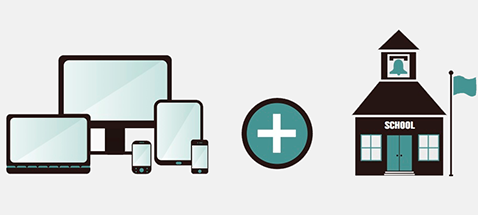
School districts often ask me, “Who can help us implement high-quality blended learning?” And my answer is always, “It depends on which phase of the project you are in and your organization’s strengths and weaknesses.” Some districts are starting blended learning from the beginning and some are looking for partners to help them think through scaling beyond a pilot. Others need help figuring out the right infrastructure investment, or which software to choose, or how to deepen their current blended learning instructional practices. So, whether you call them implementation experts, technical assistance providers, or consulting partners, how should you pick the right blended learning professional services partner for your district?
Assess Your Internal Capacity First
Once you have collaborated with key stakeholders across your district to develop a shared vision for blended learning, you can work to assess where you may need help with implementation. Most districts assess their needs by completing a simple but honest self-assessment, also commonly referred to as a gap-assessment. To complete this assessment, you should use a framework or survey. Once you understand your specific needs, you can better identify the right professional services partner.< Some tools you can use to self-assess:
- Project 24 Future Ready Self-Assessment – An online survey that walks you through seven “gears” of implementation.
- District Stakeholder Blended Learning Readiness Assessments – A survey focused on assessing six key stakeholder groups involved in the blended learning journey. Conducting this survey will help assess alignment across stakeholders as well as areas that many need attention.
- Blended Learning Implementation Guide v2.0 – Use the decisions highlighted on page 11 (Create Conditions for Success, Plan, Implement, and Improve) to self-assess your organization’s strengths and weaknesses on a scale from 1-little or no capacity to 5-fully capable and available. If you need additional information on some of the decisions, you can find details and links to external resources in subsequent pages.
Other open source assessment tools exist and no one tool is perfect.
Allocate Staff to Key Activities
Once you understand your district’s unique needs, determine where existing staff can contribute (typically areas you identified as strengths) and where you may need to partner with a professional services organization for help (typically areas you identified as a challenge). In doing this rough staff allocation, be cognizant of layering on additional responsibilities without over burdening staff. Also, ensure staff have access to adequate resources to complete assigned tasks. We have seen blended learning implementations fail due to overestimating the amount of time existing staff can contribute to the initiative or not providing staff with adequate resources to complete their responsibilities. Districts that attempt to skip some of the key planning and implementation steps may have a successful pilot, but will struggle to scale implementation across grades and schools.
Key Attributes of Great Partners
Now that you have an understanding of your strengths and the support you need, you can turn your attention to finding the right professional services partner. In addition to supporting your unique needs, great professional services providers also offer resources for the work your staff plans to complete. Key attributes you should look for in a high-quality blended learning professional services partner:
- Do they understand your district’s specific needs and vision for blended learning, and do they have experience with other clients addressing those needs?
- Will they share examples of implementation challenges they faced with previous clients and how those challenges were overcome?
- Are they willing to provide tools and insights for areas of the work district and school staff plan to complete as well as build internal staff capacity?
- Will they give you an insightful assessment of where your district needs help and partner with you to address issues that may come up?
- Does the proposed value they will bring to your organization justify the cost?
- Can they help you scale high-quality pilots across additional classrooms and schools?
- Most importantly, are they a trusted thought partner in this space?
Pitfalls to watch out for:
- Working with the same consultant from previous initiatives because they “know your district,” even if they do not have a background in blended learning implementation.
- Overestimating the amount of work internal staff can take on instead of finding the right partner with the right expertise to help.
- Assuming all software providers can provide help with blended learning planning and implementation support.
When choosing a professional services partner ensure you: build a shared vision among your district stakeholders about implementing blended learning, assess your internal capacity and assign work based on staff availability, work to identify a trusted professional services partner(s) to help you fill in gaps, and collaborate with the team to plan and implement high-quality blended learning.
What’s Next?
Now that you have found the right blended learning professional services partner, spend some time thinking through how to structure the agreement. For more on blended learning, check out:

